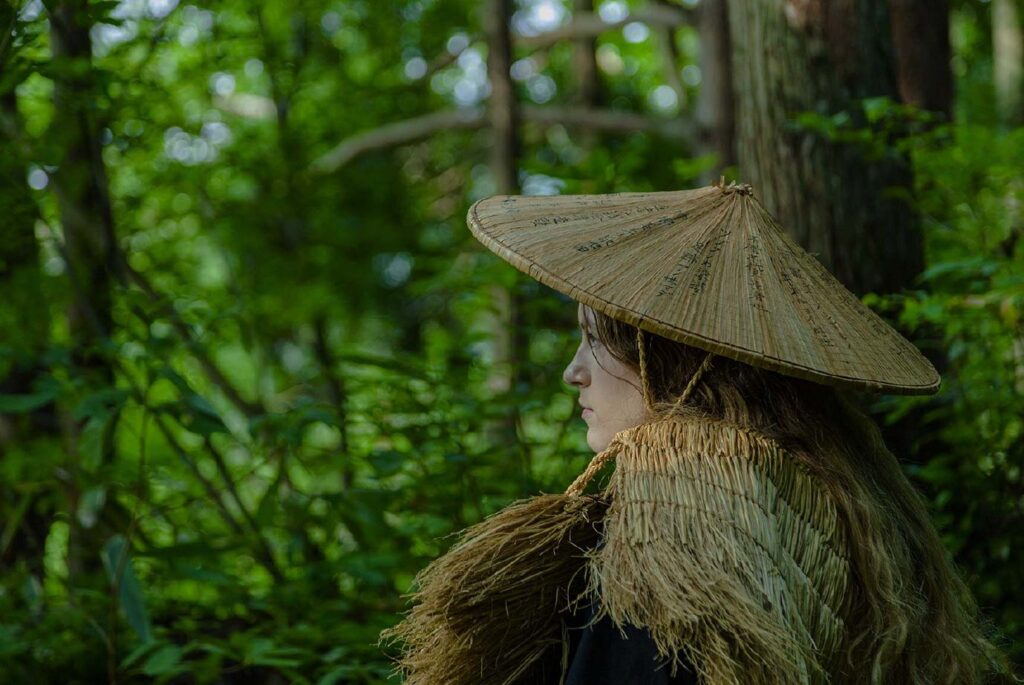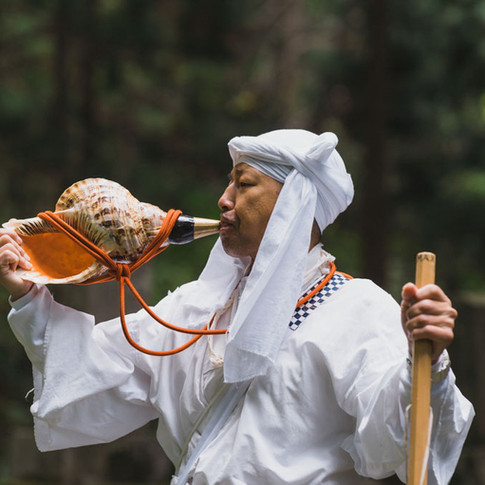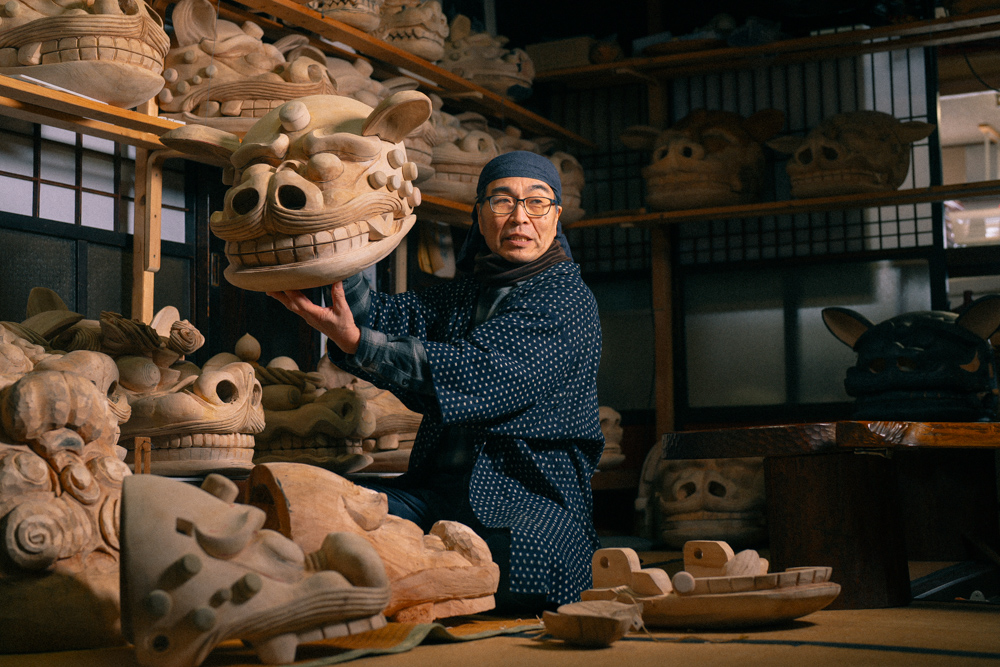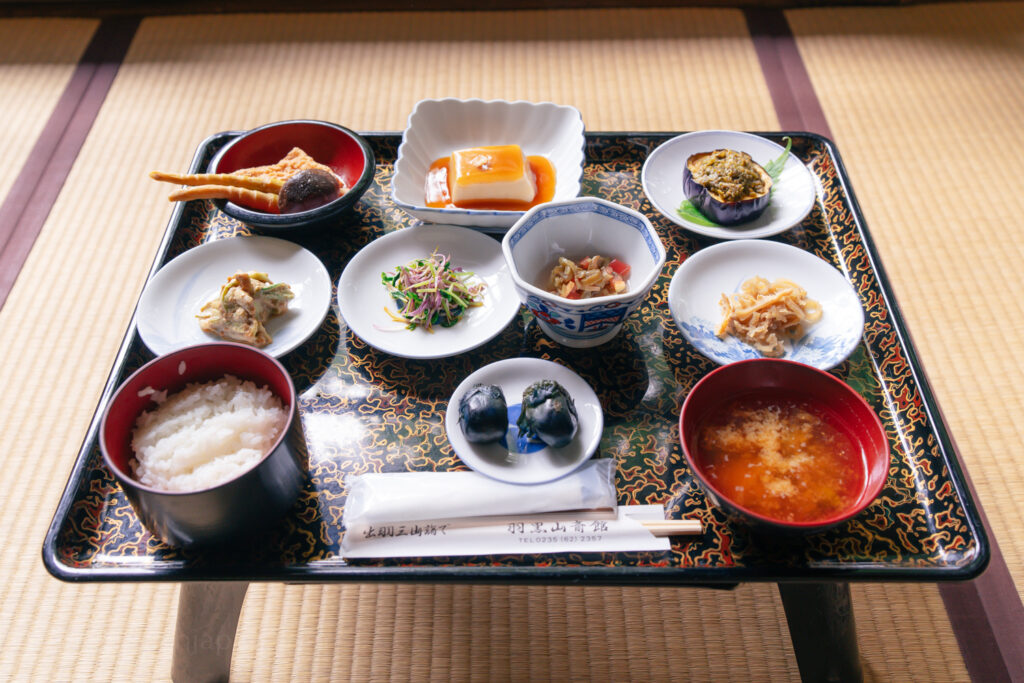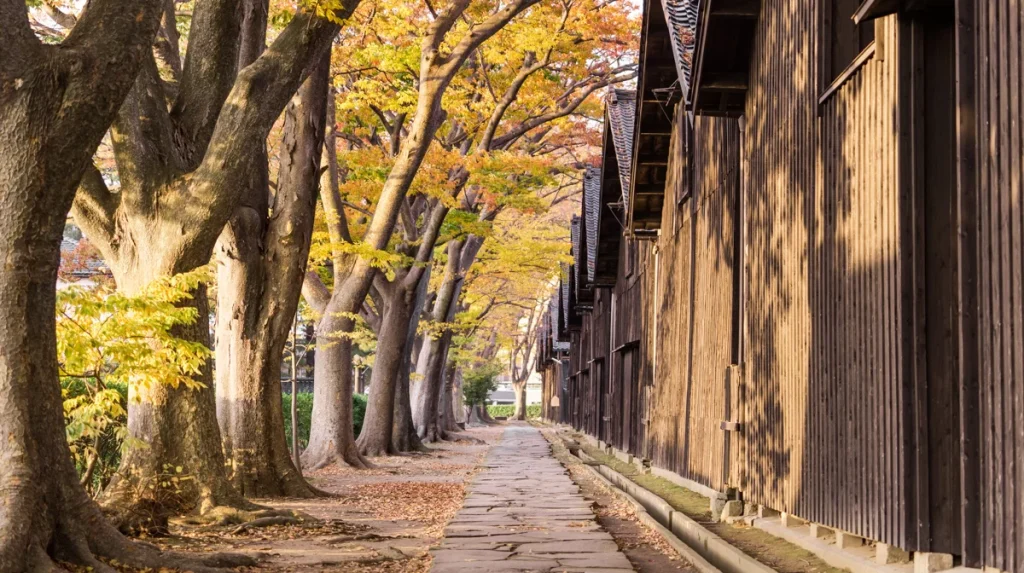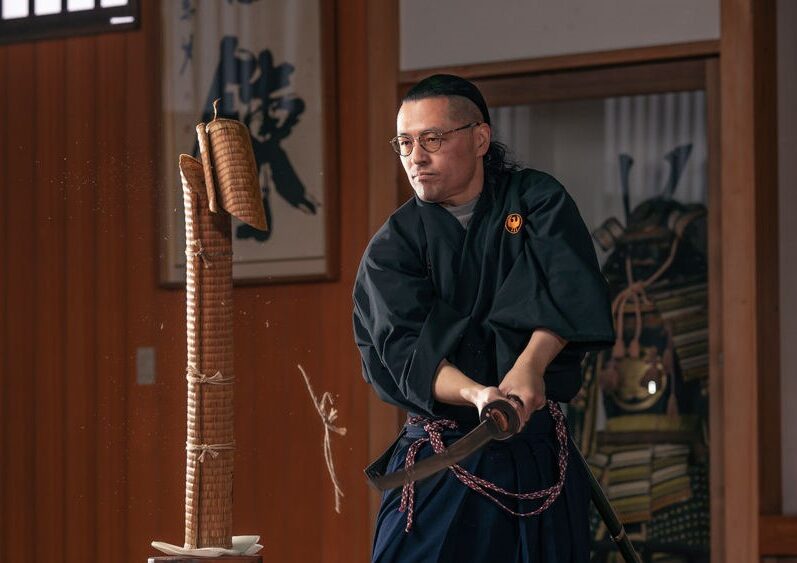
Yamagata Prefecture
Just outside Yamagata City lies the enchanting ancient Buddhist temple complex of Yamadera Temple.
Formally referred to as Risshakuji, Yamadera is the local name given to the cluster of religious structures hewn into a steep mountainside overlooking a quaint village of the same name. It translates simply to “mountain temple.” It is accessible by train or car from Yamagata City‘s Yamagata station.
Ascend the over a thousand stone steps of this mountain temple and you’ll quickly succumb to the still tranquility of the dense forest and the many stone-carved memorials that abound along the way. At the awesome, upper Niomon gate, take a breather and reflect upon the silent, sentinel cedars that surround you. And further up at Godaido, perched along the cliffside, you can let your gaze stretch across the valley below and onward to a mountainous horizon, and finally consider for a moment the timeless seasons that attend this world, with or without us.
It’s no wonder that Japan’s illustrious haiku poet, Basho, penned some of his most famous lines in ode to Yamadera:
stillness
steeps into the stones
the cry of cicadasMatsuo Basho
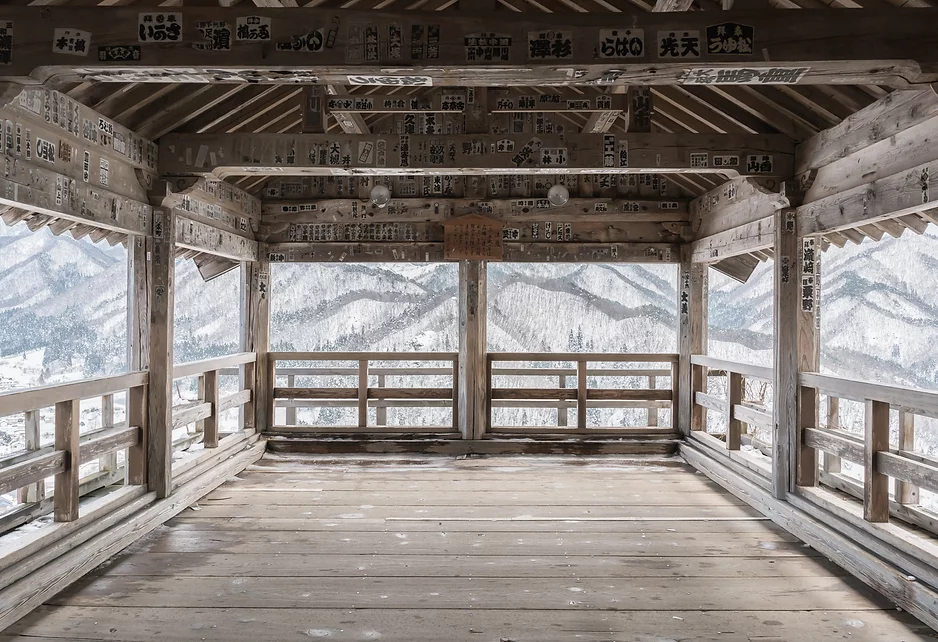
Quick Info
Cost
Admission price: 300 yen
Our Fully-Guided English Tour is available for extra.
Opening Hours
8:30am-4:00pm
Average Duration
1.5 – 2.5 hours
Address
4456-1 Yamadera, Yamagata, 999-3301, Japan
Yamadera Temple is located just outside of Yamagata City. This location is easily accessible via car or train and even has a dedicated train station right next to it called Yamadera Station. See available rental car options here.
Other tips
Best Time to Visit: Yamadera captivates at any time of year. Spring affords mild temperatures and an explosion of new life and greenery. Likewise, autumn changes the forest leaves into myriad reds and yellows. While winter time produces beautiful snowy scenes and the mountain is still accessible, the halls are closed due to the weather. One bonus of going in the winter though is that you may have the place practically to yourself.
History
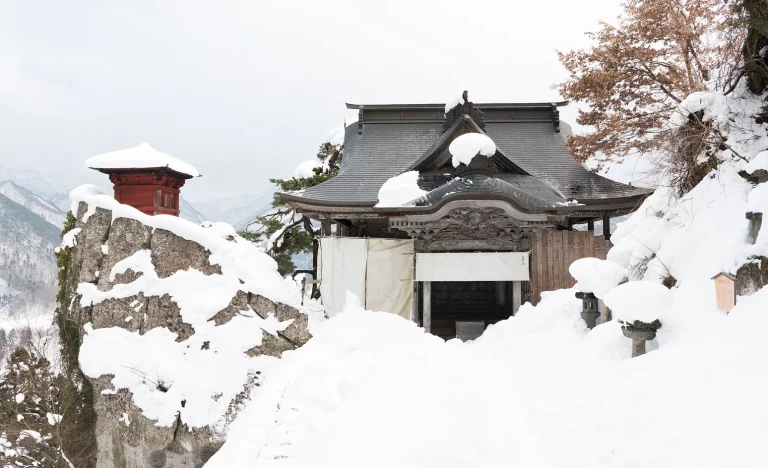
Yamadera Temple was founded in the year 860 by Jigaku Daishi of the Buddhist Tendai sect, a discipline originally imported from China. Daishi spent nine years studying in China and wrote numerous books (and over a hundred over the course of his lifetime), many of which are maintained at Yamadera. From its home base in Kyoto, Enryakuji Temple used this monastic, mountainside seminary to ensure its sphere of influence over the otherwise, rural, rugged, and untamed Northern frontier. The 16th century saw intense wartime destruction, and many of the original structures were rebuilt afterward.
Konponchudo Hall, an exemplar of Tendai architecture, is the best place to start your journey. To get here from the train station, walk straight toward the town. You’ll see the rocky Mt. Houjusan rising above you, along with several unusual geological formations and a few buildings peeking out from the forest. After crossing the Tachiya River, turn right, and walk until you see the stairs leading up to Konponchudo Hall. It’s about ten minutes from the station.
Konponchudo Hall is constructed entirely of beechwood, a rare building material in the area, and is claimed to be the oldest of such buildings in all of Japan. This construction also houses the eternal flame brought from Enryakuji Temple, and was lit by a still older flame ferried over from China. In fact, Yamadera’s fire was used to relight the flame in Kyoto after Enryakuji Temple was originally destroyed during warfare in 1571. On days when Konponchudo is open to the public, visitors can witness and pray to the sacred fire, representing the light of the Buddha’s teachings; it has been burning continuously for hundreds of years.
A wooden carving of the jolly and rotund Yakushi Nyorai (the god of healing) greets visitors under the front eaves of the hall, and it is said to be good luck to give him a good rub. His hand-polished belly is testament to this custom.
The Path Up
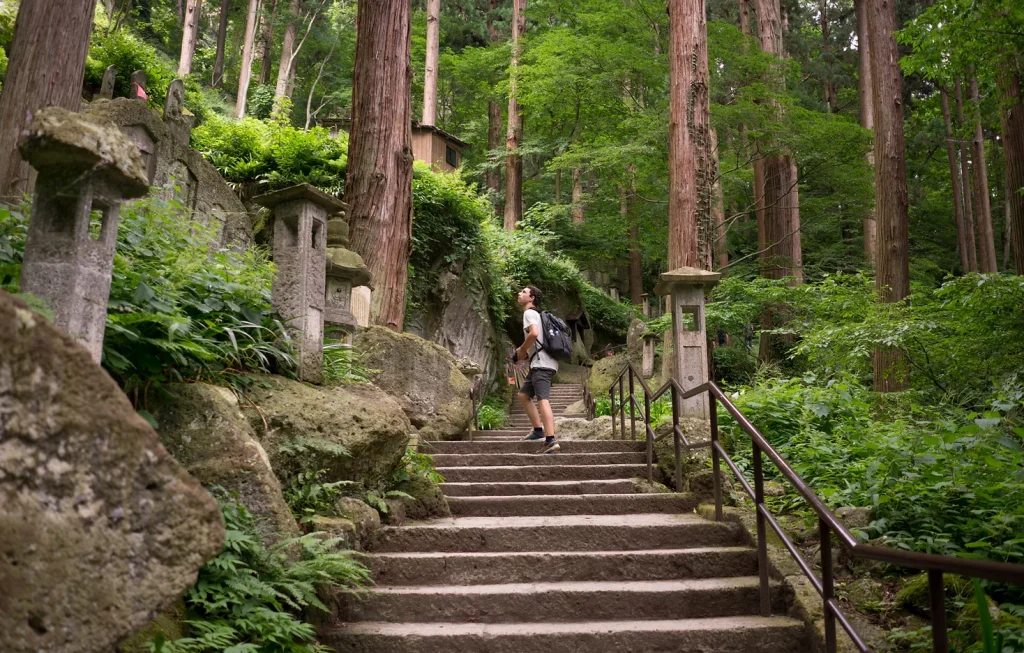
Crossing the threshold, visitors find themselves stepping into another world. Enshrouded by tall cedars and ferns that cling to mossy crags, the sun glances through the leaves above, dappling the innumerable stone lanterns and ancient gravesites that follow along the path and dot the forest. Shortly up the way, you’ll find another memorial to Basho, the Semizuka, where seven poets joined in remembrance of the posthumous poet and buried several of his poems in 1758.
From here a bare cliffside grazes the sky to your left and to your right, just before Niomon Gate you’ll see another natural volcanic wall, the Midahora, home to many stone-carved tablets and where passers-by embed coins in the wall, and Jizo Guruma—wheeled prayer sticks—pile up in remembrance of the dead. These are dedicated to Jizo Bosatsu, a revered Japanese deity who in kindness looks after the tribulations of the departed.
From Midahora, one can see Niomon Gate above, which marks the entrance to the upper portion of the mountain. Niomon gate is constructed out of zelkova wood, and peering through the slatted windows, one can see the fearsome Nio, warrior guardians of the holy realms above. The stairs lead to a veritable village of seminary buildings and temple halls, including at the top, the Okunoin, which houses a large statue of the Amida Buddha. Up here the views really open up and one can see the distant ranges across the valley, as well as off to the right, the tiny Nokyodo building perched upon a precarious boulder, next to Kaisando Hall. Framed against the sky, these are probably the two most iconic and photographed buildings in Yamadera.
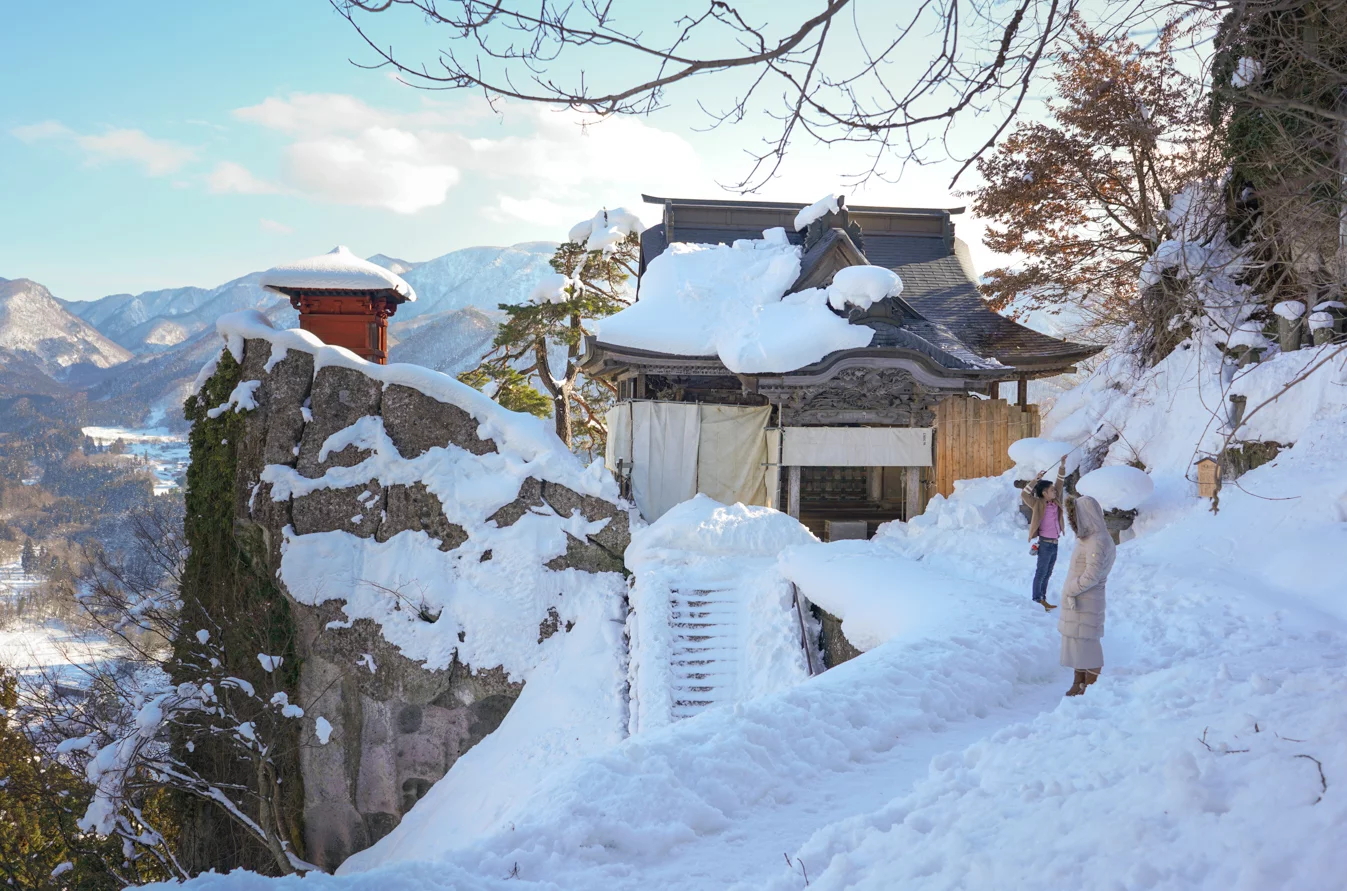
Head back down a little way, but before Niomon gate, take the path to the right toward Kaisando Hall. The miniature, vermillion-painted Nokyodo building rests above deep fissures in the stone and was once used to copy the sutras. Kaisando Hall is dedicated to Daishi, the temple founder. To the right of Kaisando Hall, you come to perhaps Yamadera’s principal attraction, Godaido—and it’s viewing platform. At Godiado, built in 1714, you’ll be rewarded for your long journey with spectacular views of the countryside. It’s a great place to take a much-earned break from all those steps (and to prepare you for the trip back down!)
From Yamagata City, Yamadera is just a twenty to thirty-minute train ride, and considering the history, the views, and most of all the profoundly captivating atmosphere of the place, Yamadera Temple is worthy of not just a detour, but a proper place on your list of can’t-miss destinations in Japan.
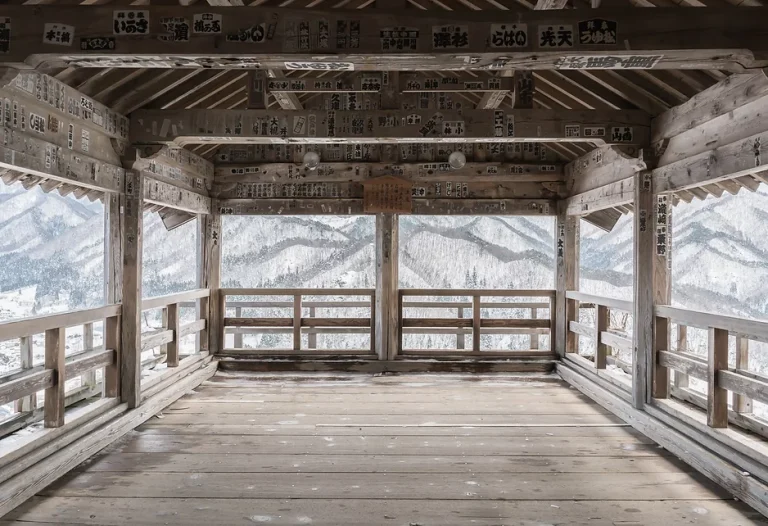
Directions
Yamadera Temple is easy to access from Yamagata City directly from Yamagata Station via the JR Senzan Line.
From Yamagata Station, take the JR Senzan Line (Line 7). It will be 240 yen for one way. Line 2 from the Yamadera Station returns you. Trains run every hour. The area is also accessible by car, and there are a number of nearby pay-to-park parking lots in the nearby vicinity, including one right in front of the train station and one next to the entrance to Konponchudo.
This is the same train that leads to Sendai City and the station is called Yamadera Station.


